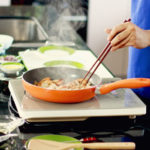The magenta plant, or more commonly known as cẩm leaf in Vietnam, is a versatile ingredient used extensively in culinary creations, especially in baking. However, not many are aware of its origins and benefits. Let’s delve into the world of this fascinating plant and uncover its secrets.
1 What is the Cẩm Leaf?
The cẩm leaf, also known as Peristrophe bivalvis in the scientific community, is an herbaceous plant primarily cultivated in Southeast Asia. It boasts three distinct varieties, each with its unique characteristics: the purple cẩm leaf, the red cẩm leaf, and the yellow cẩm leaf.
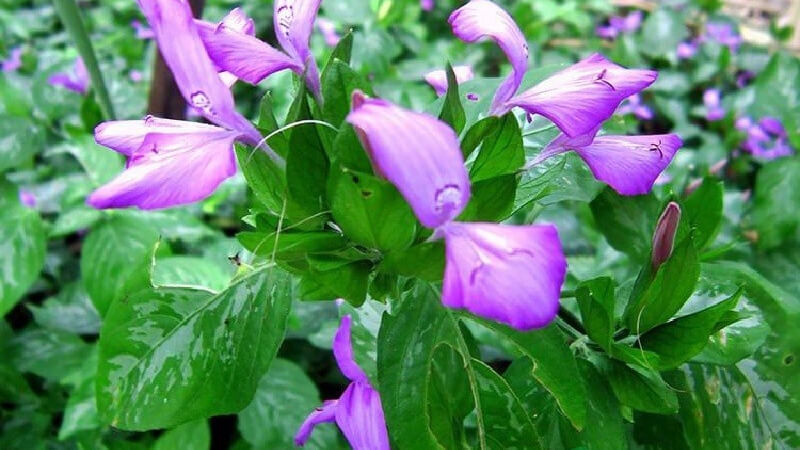
– Purple Cẩm Leaf: Also called chằm lai, it has light green, thin, and broadly ovate leaves with minimal hair. Its unique trait is the vibrant purple color of its leaf extract.
– Red Cẩm Leaf: Known as chằm thủ, this variety produces red leaf extract. Its leaves are dark green, ovate, and densely hairy.
– Yellow Cẩm Leaf: This variety is also called chằm hiên or cẩm dại. Its leaves are ovate with a tapered base and pointed tip. Crushing the leaves releases a yellow-green liquid.
Cẩm leaf plants typically grow near streams or in areas with high humidity. They attain an average height of 50-100 cm, with leaves measuring 2-7 cm in length and tapering towards the tip. The stems have four sides with deep longitudinal grooves, and young stems are hairy, becoming smooth as they mature. The plant blooms in the fall, bearing bright red or reddish-purple flowers.
2 Benefits of Cẩm Leaf
In traditional medicine, cẩm leaf is valued for its cooling properties and sweet, mild flavor. It is used to treat various ailments, including as a pectoral to soothe coughs and as an astringent to stop bleeding. In combination with other herbs, cẩm leaf is also employed to address conditions such as bronchitis, sprains, tuberculosis, and hematemesis.
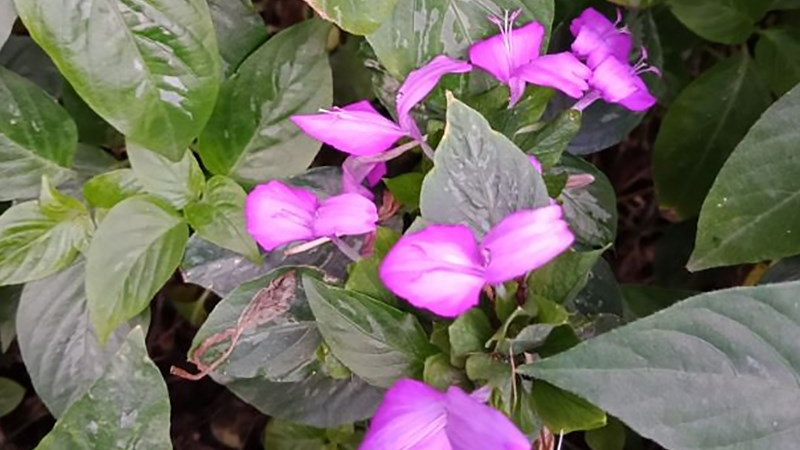 Benefits of Cẩm Leaf
Benefits of Cẩm Leaf
Additionally, cẩm leaf is effective in alleviating skin conditions like rashes and boils. For this reason, it is commonly used in children’s bathwater, especially during the summer months.
In the culinary realm, cẩm leaf serves as a natural food coloring agent, imparting a distinctive hue to dishes. It is often used to enhance the appearance of foods such as cakes, sticky rice, and desserts, making them more visually appealing and enticing.
3 Delicious Dishes Featuring Cẩm Leaf
Cẩm Leaf Sticky Rice
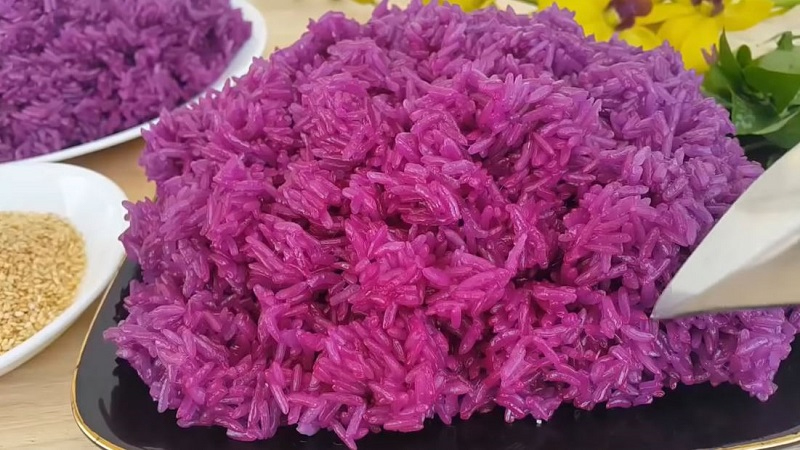 Cẩm Leaf Sticky Rice
Cẩm Leaf Sticky Rice
Cẩm leaf sticky rice is a delightful dish that can be easily prepared at home. It captivates the senses with its aromatic coconut fragrance, the stunning purple hue from the cẩm leaf, and a delicate balance of sweet and savory flavors. Whether enjoyed as a snack or a hearty breakfast, it never fails to satisfy.
Cẩm Leaf Bánh Tét
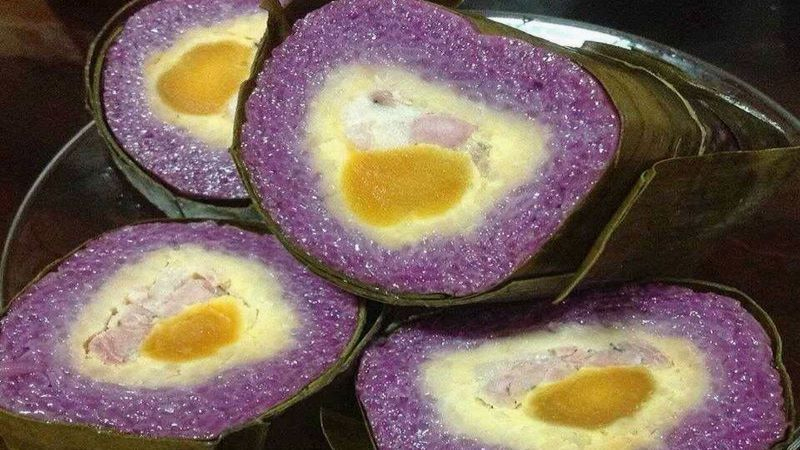 Cẩm Leaf Bánh Tét
Cẩm Leaf Bánh Tét
A specialty of Cần Thơ, this delicacy captivates with its unique blend of flavors. The bánh tét, a type of cylindrical glutinous rice cake, combines the chewy texture of glutinous rice with the savory taste of mung beans and the nutty flavor of sesame seeds, creating an explosion of flavors that will leave you craving more.
Cẩm Leaf and Taro “Bánh Da Lợn”
 Cẩm Leaf and Taro “Bánh Da Lợn”
Cẩm Leaf and Taro “Bánh Da Lợn”
This simple yet delightful snack is a favorite among homemakers. The result is a visually appealing treat with the purple hue of the cẩm leaf contrasting against the white taro. Each bite delivers a harmonious blend of sweet, creamy, and chewy textures.
Cẩm Leaf Chicken with Sticky Rice
 Cẩm Leaf Chicken with Sticky Rice
Cẩm Leaf Chicken with Sticky Rice
With just a few simple ingredients and a touch of creativity, you can create this unique dish. It showcases the distinctive color of the cẩm leaf and the savory flavors of chicken and sticky rice, resulting in a nutritious and flavorful meal.
Cẩm Leaf Bánh Ít
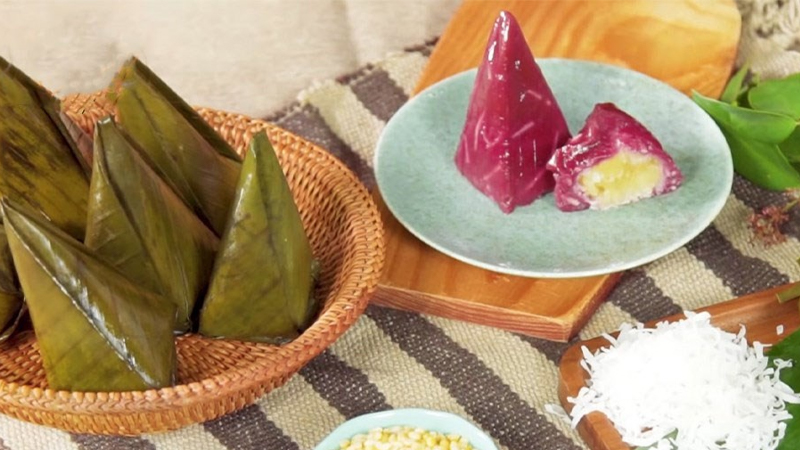 Cẩm Leaf Bánh Ít
Cẩm Leaf Bánh Ít
Beyond its captivating purple exterior, bánh ít lá cẩm delights with its chewy dough, sweet and fragrant filling, and creamy coconut sauce. It’s a treat that’s sure to tantalize your taste buds.
Cẩm Leaf Banana Cake
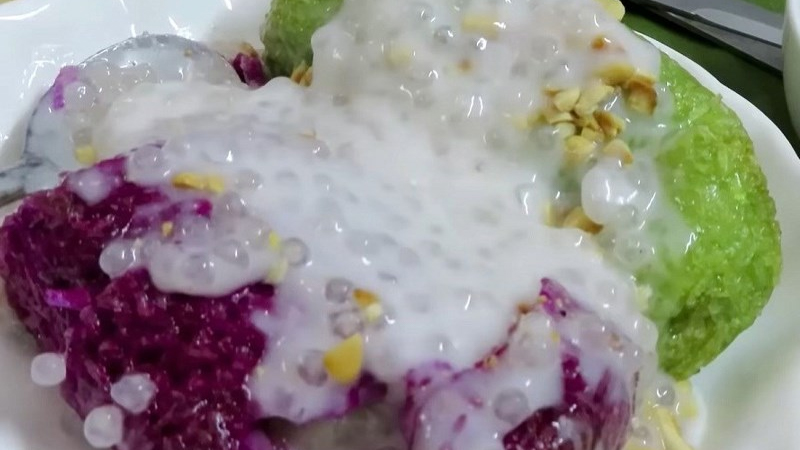 Cẩm Leaf Banana Cake
Cẩm Leaf Banana Cake
This cake is a delightful fusion of flavors and textures. The purple exterior envelops a sweet banana filling, and when paired with creamy coconut milk, it creates a decadent and satisfying dessert.
4 Extracting Color from Cẩm Leaf
 Extracting Color from Cẩm Leaf
Extracting Color from Cẩm Leaf
Step 1: Wash the cẩm leaves thoroughly and place them in a pot. Add enough water to cover the leaves and simmer over low heat. For a more intense color, continue simmering for about 15 minutes after turning off the heat.
Step 2: Remove the leaves from the pot.
Step 3: Strain the liquid through a fine-mesh sieve to obtain pure cẩm leaf extract.
With this knowledge, you can now explore the wonderful world of cẩm leaf and incorporate it into your culinary creations. Happy cooking!

























